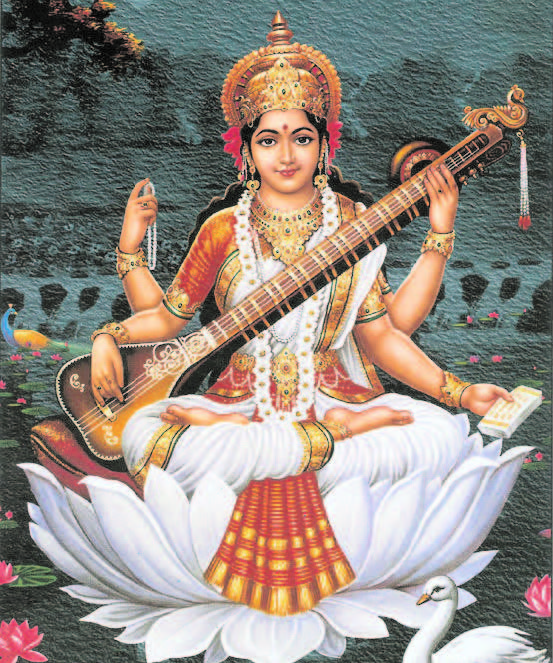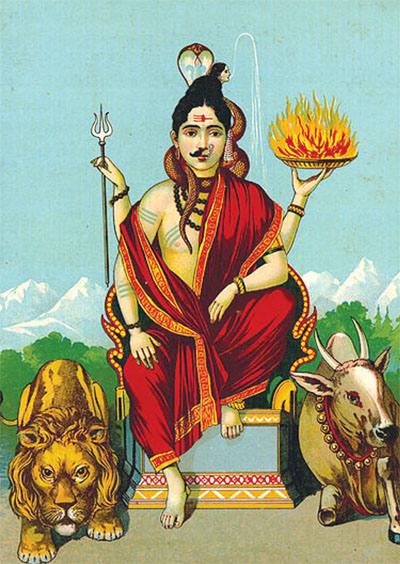
Saraswati is the beloved Hindu goddess of knowledge, music and the arts. In Buddhism, she is a guardian deity who upholds the teachings of Gautama Buddha.
In Burma she is called Thurathadi or Tipitaka Medaw, in China her name is Biàncáitian, in Thai, Surasawadee and in Japanese, Benzaiten.
Her name, which derives from two words, “saras” (meaning “flow”) and “wati” (meaning “a woman”), gives clues as to her origin. Ten thousand years ago, a mighty river flowed, three to ten kilometers wide at its largest. Called the Saraswati by those who lived along its banks (and now known to geologists as the Ghaggar-Hakra River), it carried glacial water from the Himalayas through the plains of northwest India and probably ended in a series of terminal lakes within the Thar Desert, its water only reaching the sea in very wet rainy seasons. Many significant archaeological sites have been excavated along its course-way, indicating that the river played a vital part in the development of the Indus Valley Civilization. However, the Saraswati began to dry up during the Harappan and the Late Harappan phase as evidenced by the abandonment of many sites, at the latest around 1900 BCE. This probably occurred due to the capture of its tributaries by the Indus and Yamuna River systems and the loss of water in much of its catchment area, caused by deforestation, overgrazing and irrigation.
To the people who lived along her banks, the goddess Saraswati was originally a personification of the river itself. As its waters began to fail and the Harappa settlements shifted eastward towards the mighty Indus Valley, Saraswati began to lose her status as a river goddess and became increasingly associated with literature, the arts and music. As centuries passed, she grew further to embody the concepts of intelligence, consciousness, knowledge, creativity, education, enlightenment and power. This embodiment of everything associated with refinement and culture points to her importance in the founding of an independent civilization that has endured for thousands of years.
Today Saraswati is depicted as a beautiful, light-skinned woman dressed in white, signifying the purity of true knowledge. She may be depicted near a flowing river, relating to her early history as a river goddess. Her mount is the swan, symbolizing her ability to discriminate between good and bad; however she is more often pictured seated on a white Nelumbo nucifera lotus, indicating her association with Absolute Truth. Occasionally she is associated with the colour yellow, the colour of the mustard plant flowers that bloom at the time of her festival in the spring. She is dressed modestly without ornaments or jewels, representing her preference for knowledge over material things. Her consort is Brahma. Saraswati has four arms, representing the four aspects of human personality in learning: the mind, intellect, alertness, and ego. These four arms also represent the 4 Vedas (the sacred books of the Hindu faith), which in turn represent the 3 forms of literature, poetry, prose and music. She holds in her hands a book (prose), a rosary of crystal beads (poetry) and a vina (music). Her final hand holds a pot of sacred water, which represents the purity of these three arts and their power to purify human thought.





Be the first to comment